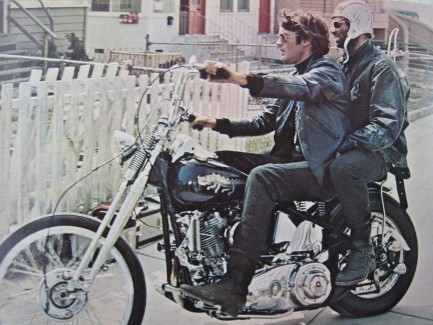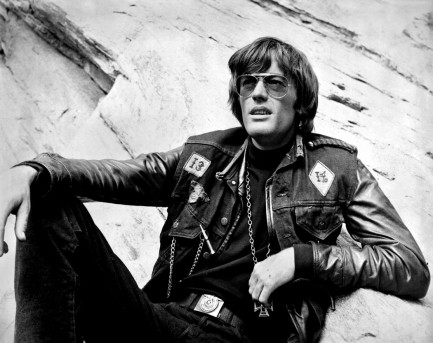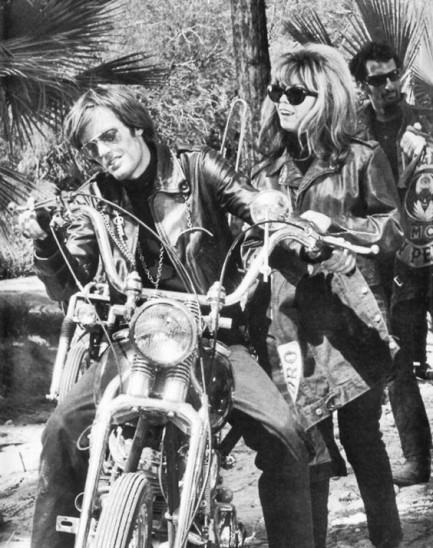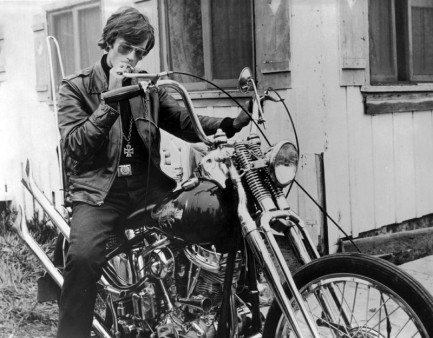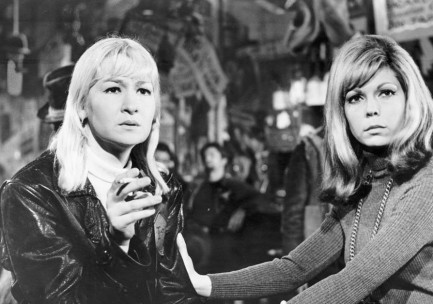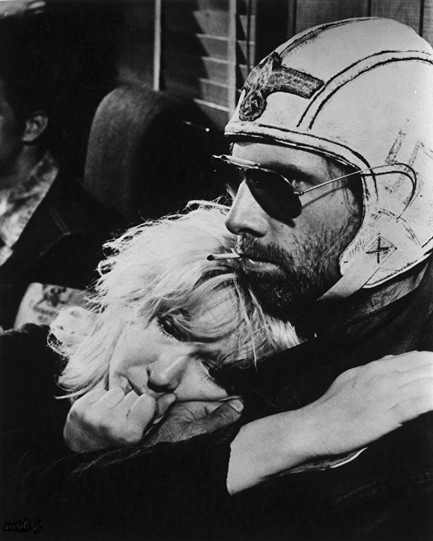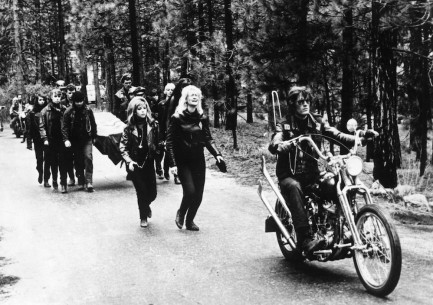| Vintage Pulp | Apr 16 2024 |

No appeal, no parole, no mercy, no hope.
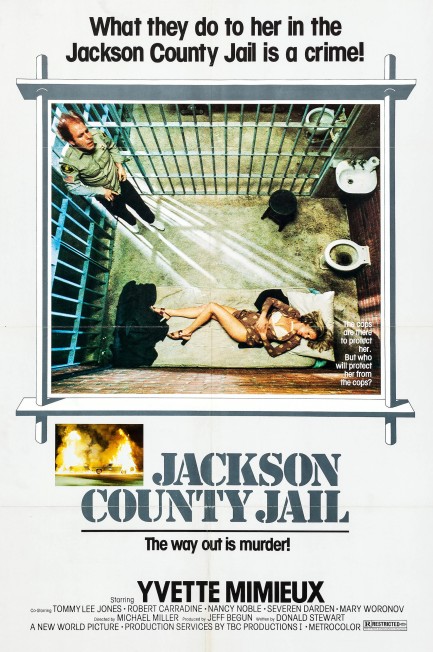
Today we continue our journey through ’70s exploitation cinema with Jackson County Jail, churned out of the grindhouse factory known as New World Pictures. Plotwise, Yvette Mimieux plays a Los Angeles advertising exec who leaves her cheating husband and finds herself at loose ends, but manages to score a job from a friend in New York City. She decides to get there by driving cross country, but passes through fictional Jackson County, located somewhere in or around Texas (a geographical fact we learn from a news broadcast that provides a Dallas Cowboys update). She's railroaded into jail and raped by the cop working the graveyard shift. Afterward, Mimieux manages to brain him with a stool and escapes with the help of hardened criminal Tommy Lee Jones, who early in his acting career (and with that monobrow of his) was already capable of making lines like this sing: “There's nothing wrong with being a crook. Everybody's crooked. I never met a straight person in my whole life. Whole goddamn country is a rip-off. And everybody in it.”
Jackson County Jail is sometimes labeled a women-in-prison flick, but it's a bit different for a generally low rent sub-genre because Mimieux was an established star, thirty-four years old with more than twenty movies behind her. The credibility she lends the film changes little about its basic purpose—titillation mixed with violence and an indictment of hick culture. Simultaneously, though, the filmmakers definitely don't go to the extremes of other women-in-prison dramas, in which we've seen women hung up by their hair. There are some viewers, we suspect, who wouldn't consider this movie a women-in-prison flick at all. We're fine leaving it out of the conversation too. The jailbound portion lasts barely twenty minutes of what is perhaps more of an outlaw movie, complete with Jones letting fly with this response to being told the police will kill him: “That don't matter. I was born dead.” Whether women-in-prison, outlaw, or counterculture, that's a damned good line. And Jackson County Jail is a pretty good movie. It premiered today in 1976
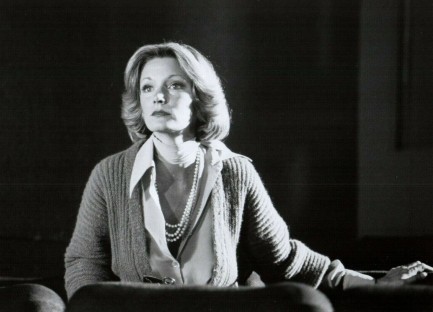
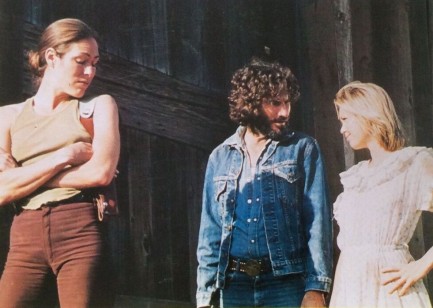
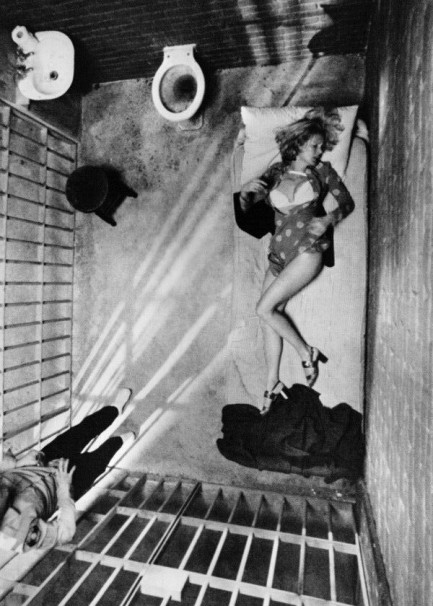
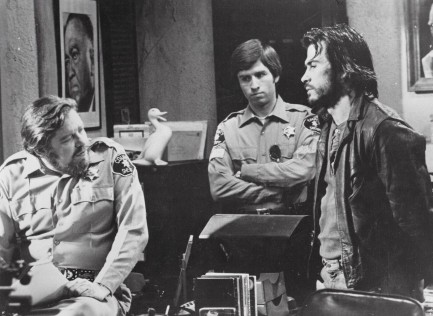
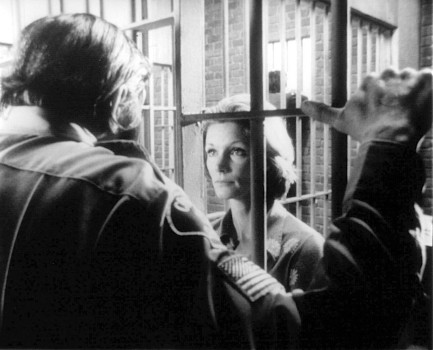
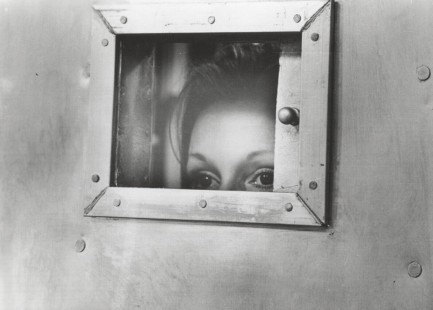

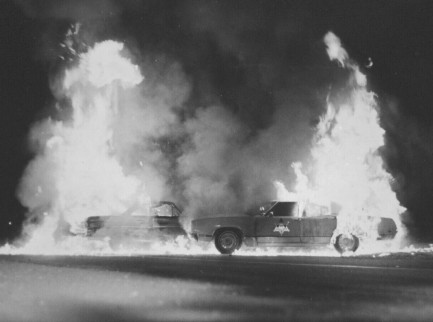
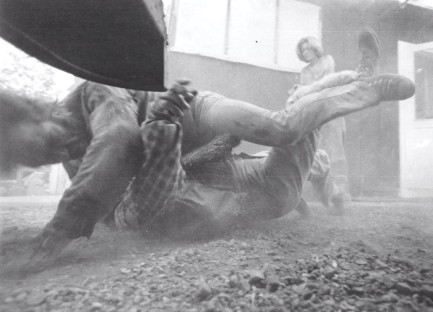
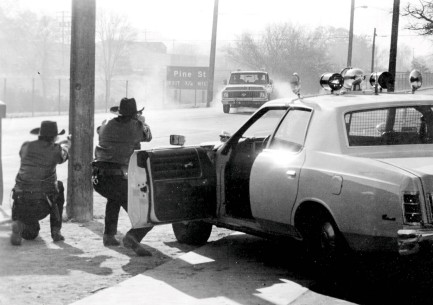
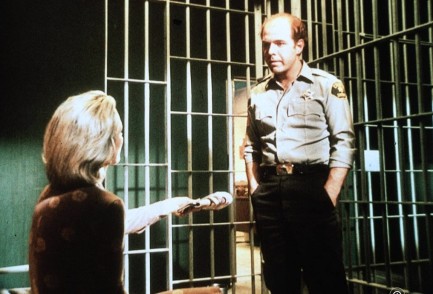











| Modern Pulp | Oct 1 2023 |

Erin Moran and co-stars have some unhappy days in outer space.
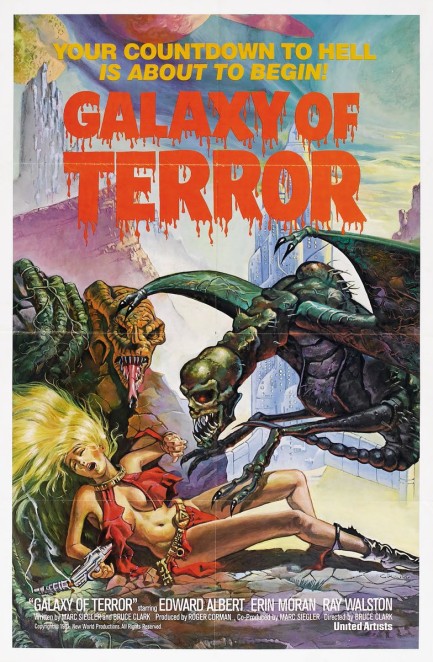
Galaxy of Terror, which premiered in the U.S. today in 1981, was produced by New World Pictures and Roger Corman, and you know what that means—no budget. Corman must have really licked his chops when he heard this pitch. In his genius, he probably realized immediately that he could avoid millions of dollars in costs by making his sets extra cheap and simply bathing them in darkness in order to save on production design. He also went cheap on script, direction, sound, music, special effects, and costuming. The result was one of many terrible outer space movies to hit multiplexes in the wake of Star Wars and Alien. This one is distinct in being influenced by both of those classics while sharing none of their advantages.
The plot deals with an intrepid crew of nine who embark on a military style rescue mission, seeking a ship lost in a distant star system on a planet called Organthus. After various travails, they land on the accursed world, find the lost ship, and make the mistake of entering it. Giant leeches, deadly shuriken, and other horrors bloodily whittle the crew down to an unfortunate few, at which point comes the infamous moment—which may be the only reason Galaxy of Terror is remembered—when poor Taaffe O'Connell is raped and killed by a giant maggot. The mission only goes farther downhill from there as Corman digs deep into the New World prop department for a couple of mothballed monsters to terrorize the survivors.
The thing about science fiction movies back then is that it was impossible to have an inkling of what the end result might be. Basically, the producers said, “Trust us, it'll look good.” The cast of Stars Wars took a leap of faith and were rewarded. The casts of imitator movies hoped to capture the same magic and failed over and over. Galaxy of Terror's budget of five million dollars probably sounded okay, considering Stars Wars cost eleven. The heady desire to roll the dice and hope for the best is probably what enticed co-star Erin Moran into taking a little moonlight ride from her hit television show Happy Days to appear in this turkey. Afterward, she may have considered a lobotomy to help her forget the entire ordeal.
There are, however, a few plusses to Galaxy of Terror. First, young production designer James Cameron probably learned that in sci-fi there's a budgetary floor beneath which disaster is assured, and would later make three of the best and most successful science fiction movies of all time (no, we're not counting Avatar). Second, co-star Zalman King probably realized sci-fi was for suckers, went softcore as a producer and director, and churned out such memorable (and now anachronistic) erotica as Red Shoe Diaries, Two Moon Junction, and Wild Orchid. And third, the poster art by Charo (not the singer) is nice. Also, the movie brought our special consulting critic Angela the Sunbear out of her cave. Watching Galaxy of Terror with her was really fun.
 I think the crew should have stayed in hibernation.
I think the crew should have stayed in hibernation.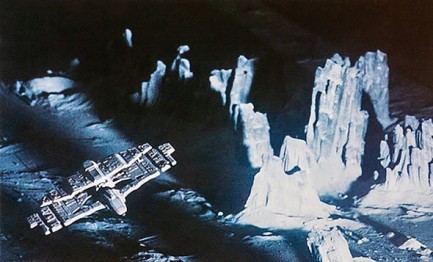
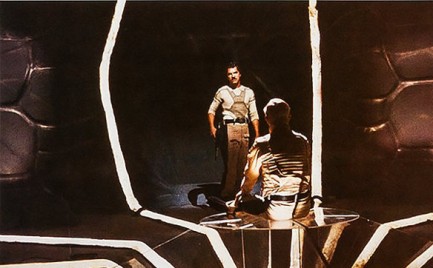
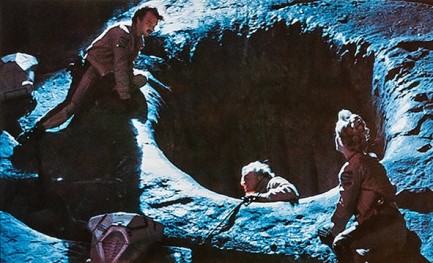
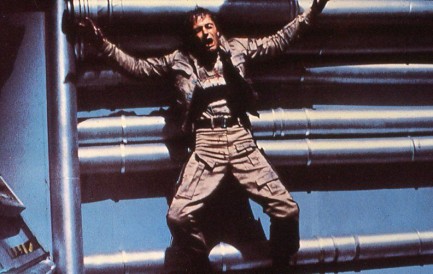
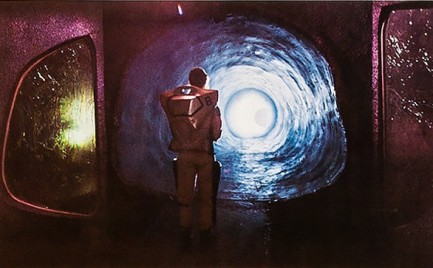

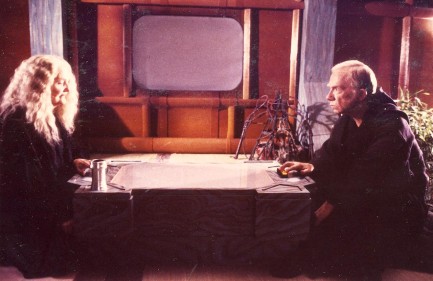
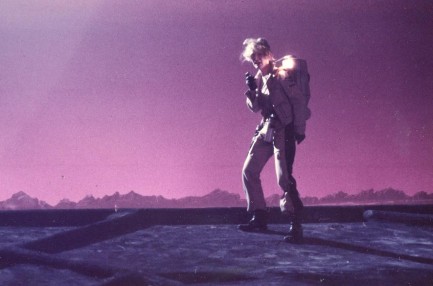
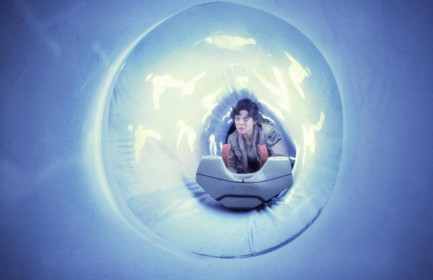
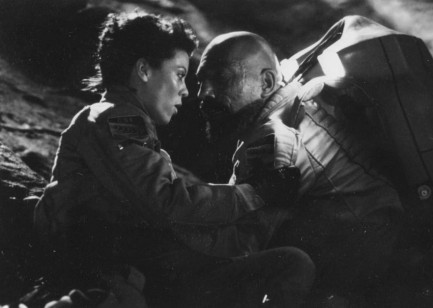
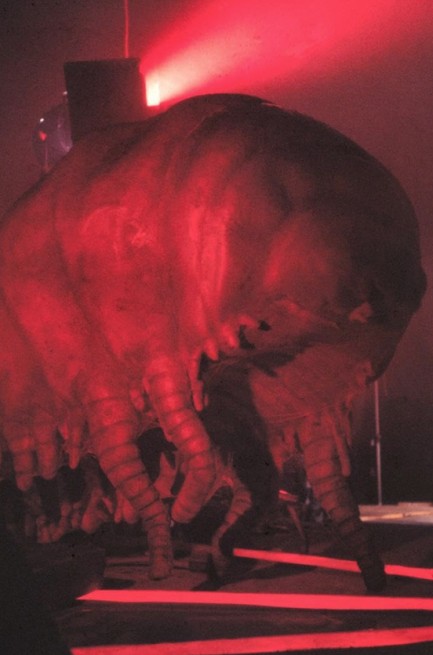
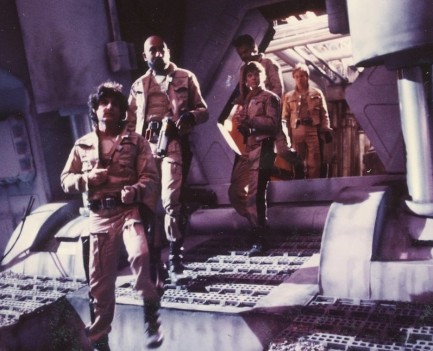
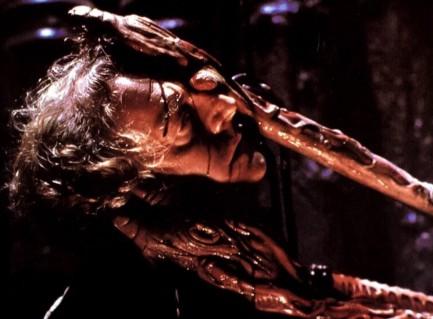
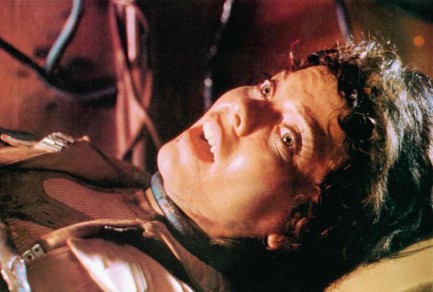
| Vintage Pulp | May 16 2023 |

Don't lose hope. If we survive this we'll probably both get a chance to act in better movies.
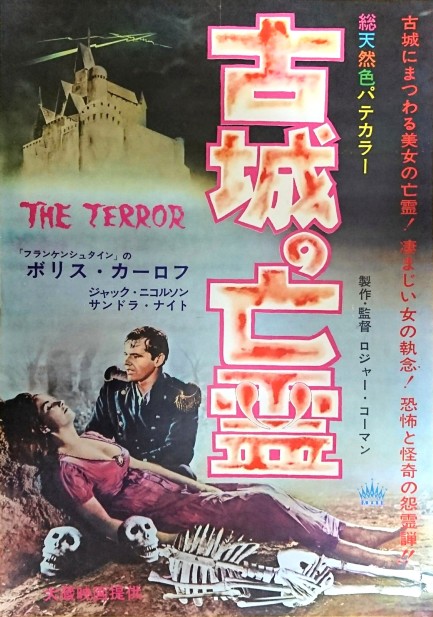
This poster was made for the horror movie The Terror, and we're showing you the Japanese promo art because—as is often the case—it's nicer than the U.S. promo. Boris Karloff and Jack Nicholson star, actors passing in the night, Karloff aged seventy-six and on the downward slope of a legendary film career, Nicholson aged twenty-six on the upslope. The latter plays a French army lieutenant named Andre Duvalier who becomes stranded circa 1806 in ye olde creepy-ass castle on the hill, which is occupied by Karloff's rickety Baron Victor von Leppe. Jack sees a mysterious woman wandering around. Karloff explains that she's the ghost of his wife, the Baronness Ilsa von Leppe, who died twenty years ago. Nosy Nicholson doesn't believe that for a millisecond, but the Baron sticks to his story, even admitting he killed the Baronness with his bare hands for the crime of adultery. Nice confession, but the Baron is lying or being duped, as far as Nicholson is concerned. In either case, the question is why?
Director Roger Corman was working from an Edgar Allen Poe template here, and in fact he shot on castle sets originally used for The Raven, which had wrapped earlier in the year. It's always good to save a buck where you can, but any advantage was lost due to Corman working from an unfinished script, which led to reshoots by Francis Ford Coppola, Dennis Jakob, Monte Hellman, and Jack Hill. All that talent wasn't enough to put together a film befitting Nicholson and Karloff, but the two leads do their damndest, and the result, though not good, isn't an embarrassment. Afterward, Karloff continued coasting into the twilight, Nicholson and Coppola moved on to widespread acclaim, Hill helped launch the blaxploitation cycle and make a star of Pam Grier, and Hellman directed the cult masterpiece Two-Lane Blacktop. It's a miracle they all contributed something lasting to cinema, because you'd never suspect it watching The Terror. It premiered in the U.S. in 1963 and reached Japan today in 1964.
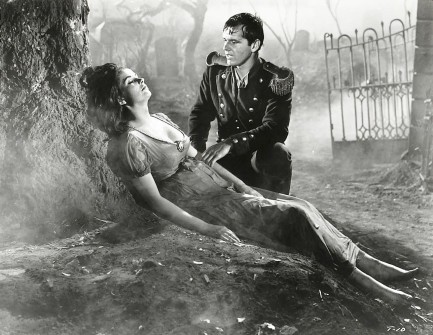
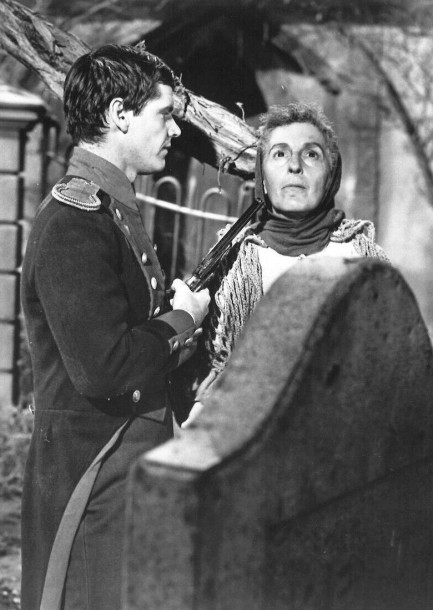
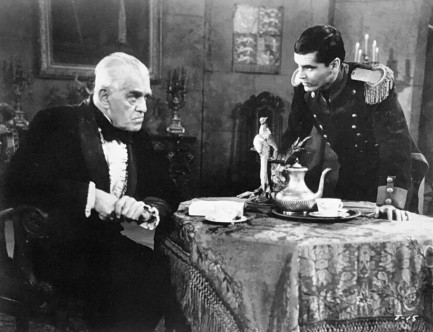
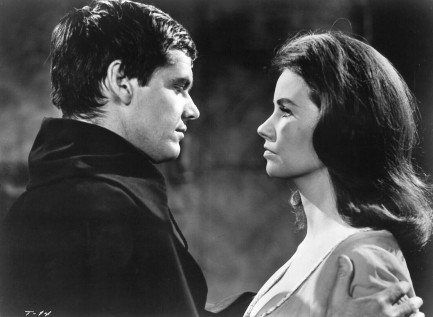
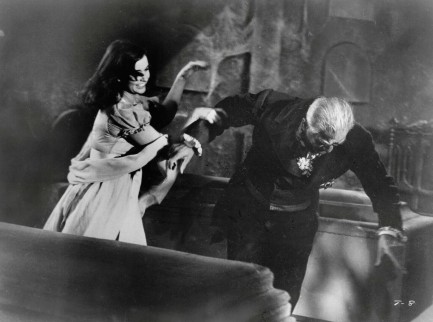
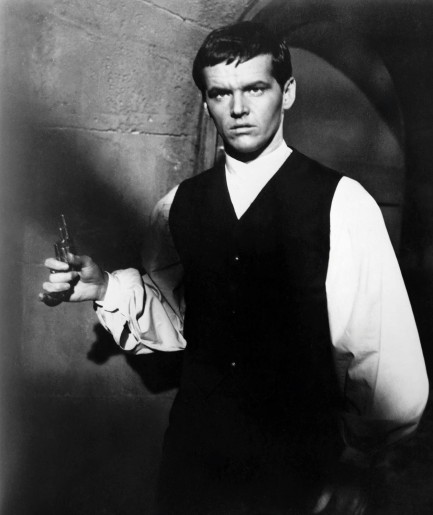
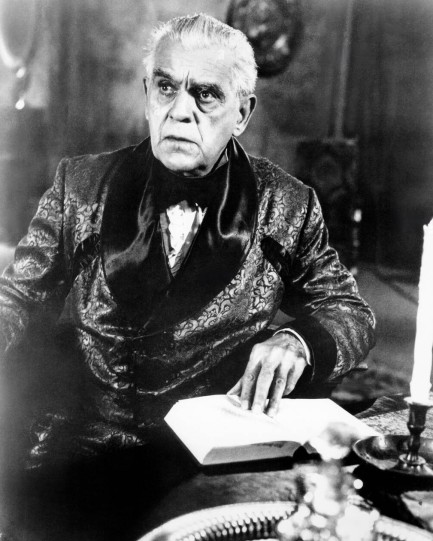
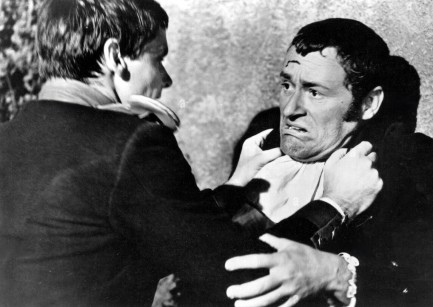








| Vintage Pulp | Apr 4 2023 |

Mess with her and you'll end up six feet under.
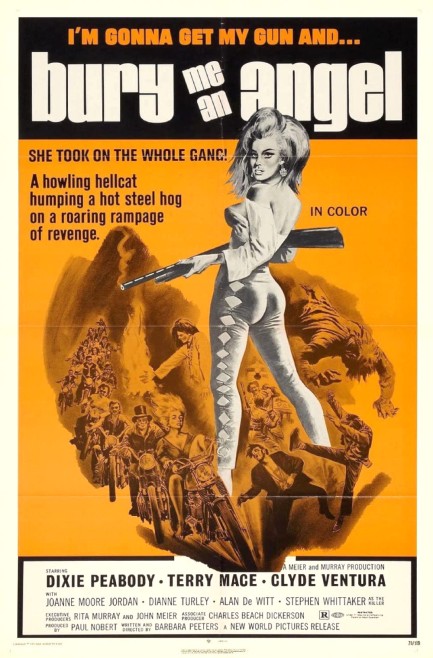
We can't say the promo poster you see above is expertly executed, but it has a quality we appreciate. It was made for the low budget action flick Bury Me an Angel, which premiered this month in 1971, and stars Dixie Peabody. She plays a tough biker chick named Dag Bandy whose brother is messily murdered via shotgun, sending her humping a hot steel hog on a roaring mission of revenge. Nice copy there from the promotional scribes behind the poster. It's a wonder people walking past the cinemas where the movie played weren't sucked bodily into the front row, such being the irresistible power of those words. Note to our non-U.S. readers (and thank you for your visits): a “hog” is a motorcycle. Normally, it's even a Harley-Davidson motorcycle. And to hump it, well, is— Oh, never mind.
The star here, Dixie Peabody, is obscure. She appeared in only two other films, Night Call Nurses and Angels Die Hard, both of which, like Bury Me an Angel, issued from Roger Corman's grindhouse mill New World Pictures. She was seventy-two statuesque inches tall—seventy-six counting her hair—so she definitely looks the part of an action hero, but even action heroes gotta act, and as Hamlet said so concisely: There's the rub. Peabody can emote, but she can't act. There's a difference. Of course, numerous b-movie performers of the 1970s couldn't act, so if we adopt the principle of willing suspension of expectation™, what do we have here? We have a lead performer with flashes of talent and more than a bit of presence, but who's stuck in a cheap-ass movie that doesn't feature much in the way of script or structure. It worked for Easy Rider, but not here.
You won't necessarily go away disappointed, though, because you get the expected cheapo movie fare: a drug montage, a bar fight, a skinny-dip, the three b's (boobs, bush, and booty), counterculture lingo, and cheesy mysticism. Somewhere in there you also get future Grizzly Adams portrayer Dan Haggerty as a guy in a diner who entices Peabody into bed, which somehow doesn't collapse under their combined weight. If you ever wanted to see a naked Grizzly, this is your chance. Eventually the film gets back on track toward Peabody's roaring rampage of revenge, which has been all roar and no rampage to this point, but finishes with a climax that asks the age-old question, also possibly from Shakespeare, since he seemed to ask every question ever: If you murder a murderer, is it justice or murder?
We can't actually recommend Bury Me an Angel, but as with its promo poster, though it isn't expertly executed, it has a quality we appreciate. It seems to us that, combined with the inhalation or ingestion of a psychoactive substance, you might find some real enjoyment here. Maybe in the end that's the surest sign of a worthwhile b-movie: it's much better high. As a side note, it was written and directed by Barbara Peeters, one of the few women who called the shots behind the camera during the grindhouse era. She would helm five motion pictures, all of them bad, reaching her apogee with 1980's Humanoids from the Deep, which took sexualized schlock to virtuosic levels. We'll be checking out one or two of her other efforts later.

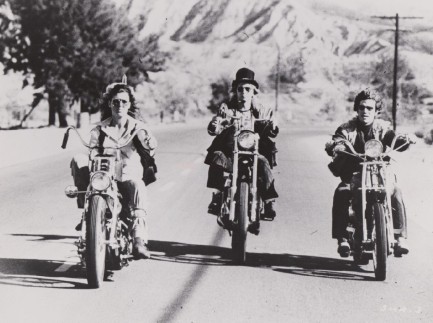
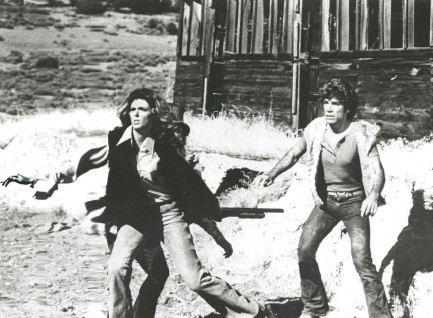
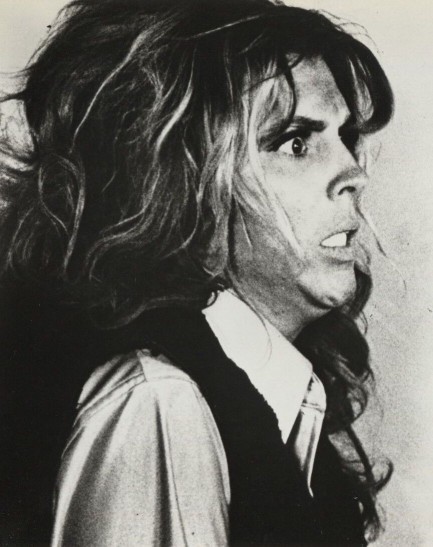
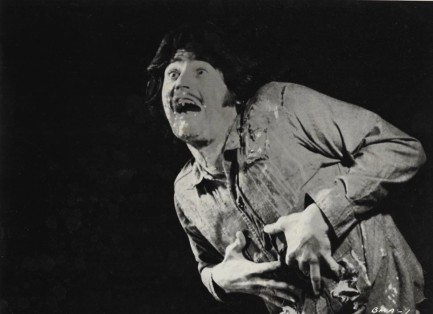





| Vintage Pulp | Jan 24 2023 |

He doesn't have a hook for a hand yet, but he's always practicing for that day.
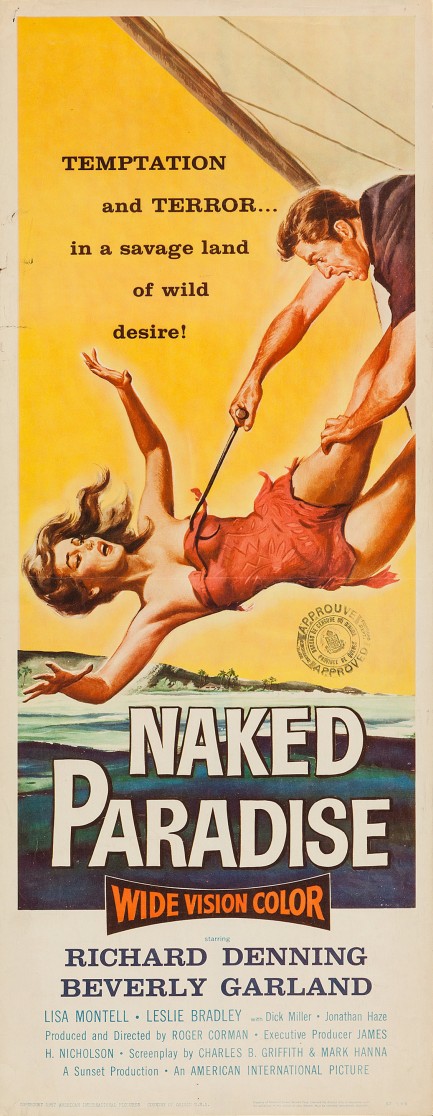
The first thing to know about Naked Paradise is that it's an early Roger Corman movie, made by Sunset Production and distributed through American International Pictures, companies he helped establish. Corman also directed, so it's safe to say he had near-total control of the movie on and off the set. While he's made some real stinkers over the years, by his standards Naked Paradise isn't terrible. That doesn't mean its good. It's still laughably dopey in parts, the type of movie you can riff on from start to finish, but narratively it hangs together reasonably well and a couple of the actors practice their craft with competence.
Plotwise, three criminals led by Leslie Bradley travel to Oahu disguised as pleasure cruisers to try lifting a massive pineapple and sugar cane plantation's payroll. Their escape is via the same method as their arrival, unbeknownst to their boatmates, who at first are too busy sunning themselves and romancing to realize there are three dangerous criminals in their midst. Tensions between the boat's captain Richard Denning and the crooks soon come to a frothing head when the lead heister and his arm candy Beverly Garland acrimoniously split from each other.
The group are then stuck together during a tropical storm, a plot turn which brings to mind Key Largo. In fact we can hear screenwriter Robert Wright Campbell's pitch to Corman: “You see, it's Key Largo, sandwiched on one side by deep backstory showing the audience why Johnny Rocco and his henchmen are on the run, and on the other by an extended aquatic climax.” That's exactly the movie Corman made, though doubtless done far more cheaply than Campbell ever envisioned.
Corman has a genius for conjuring final results that are better than their shoestring budgets should allow, and he certainly is an unparalleled wrangler of nascent talent. He's given opportunities to directors such as Coppola, Demme, Scorsese, and Ron Howard, and performers like Jane Fonda and William Shatner. If there's such as thing as a pulp filmmaker he's the guy. His stories nearly always aim for the gut by focusing on action with a hint of innuendo, and rely upon the most standard of cinematic tropes. Naked Paradise is quintessential Corman. Is it good? Not really. But it's certainly watchable. It premiered this month in 1957.
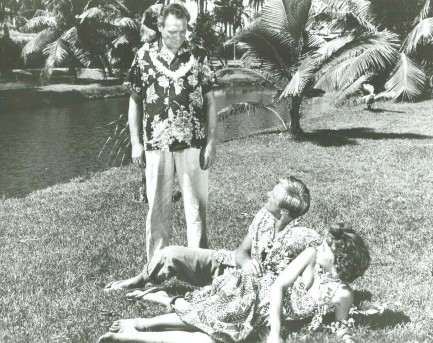
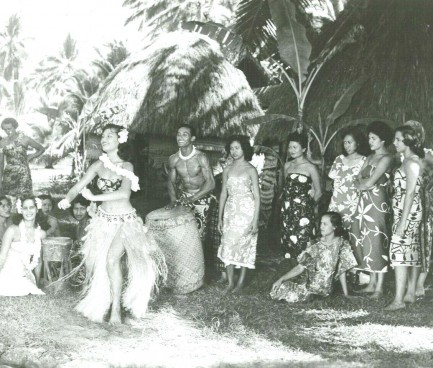
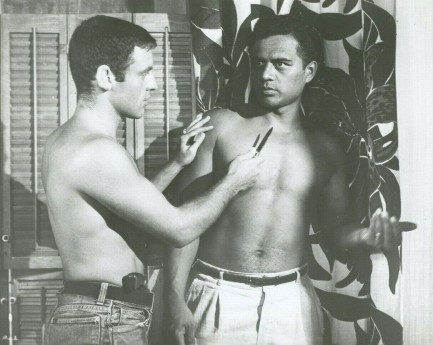
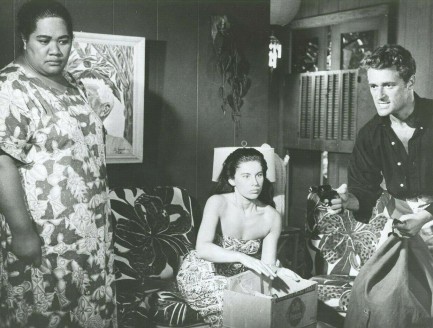

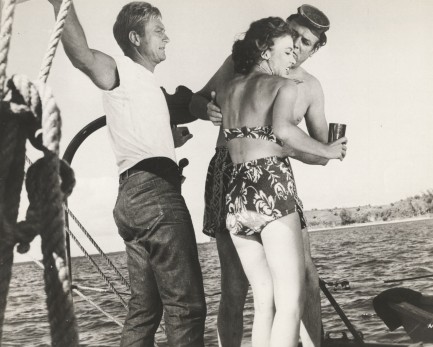
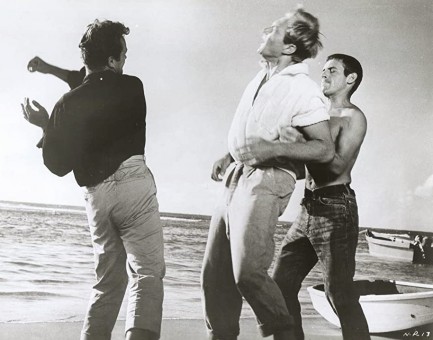
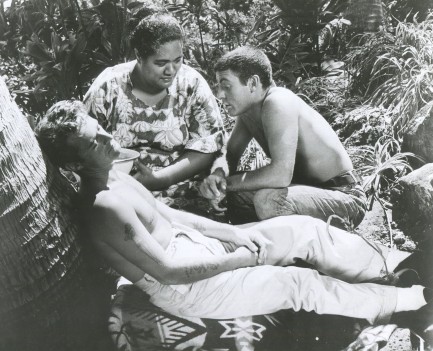
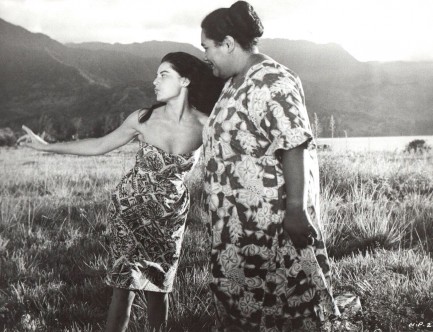
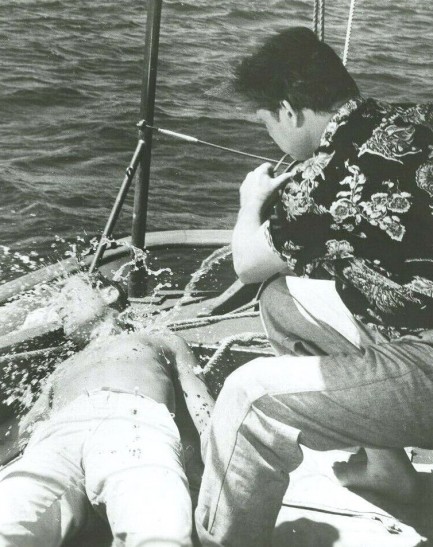
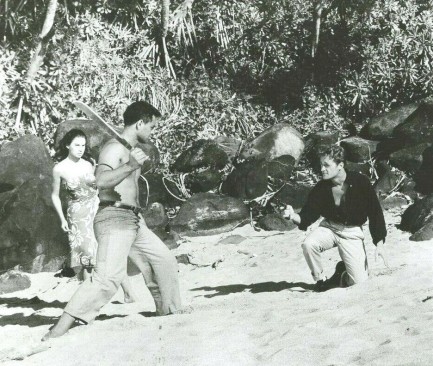
The group are then stuck together during a tropical storm, a plot turn which brings to mind Key Largo. In fact we can hear screenwriter Robert Wright Campbell's pitch to Corman: “You see, it's Key Largo, sandwiched on one side by deep backstory showing the audience why Johnny Rocco and his henchmen are on the run, and on the other by an extended aquatic climax.” That's exactly the movie Corman made, though doubtless done far more cheaply than Campbell ever envisioned.
Corman has a genius for conjuring final results that are better than their shoestring budgets should allow, and he certainly is an unparalleled wrangler of nascent talent. He's given opportunities to directors such as Coppola, Demme, Scorsese, and Ron Howard, and performers like Jane Fonda and William Shatner. If there's such as thing as a pulp filmmaker he's the guy. His stories nearly always aim for the gut by focusing on action with a hint of innuendo, and rely upon the most standard of cinematic tropes. Naked Paradise is quintessential Corman. Is it good? Not really. But it's certainly watchable. It premiered this month in 1957.











| Femmes Fatales | Sep 21 2022 |

If you think this looks ridiculous you should see my winter wardrobe.
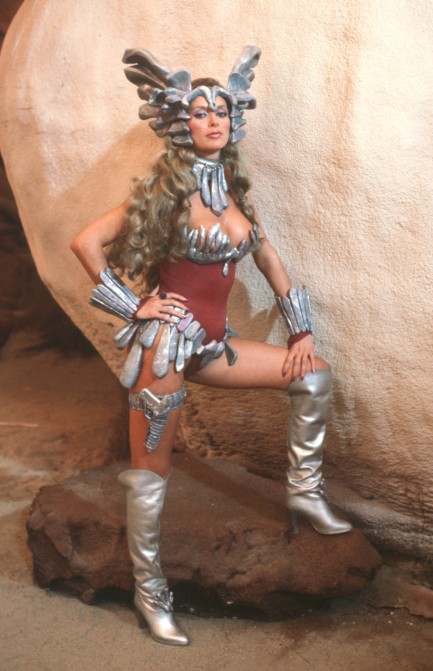
Austrian actress Sybil Danning has a lot of promo images with guns, both realistic and fake, due to her appearance in several over-the-top action movies, including 1984's Euer Weg führt durch die Hölle, aka Jungle Warriors, 1983's Chained Heat, and 1980's Battle Beyond the Stars, for which she shot the above photo. All of those films have attained cult status of varying levels, but the latter is amazing because of the people associated with its production. Its stars included respected actors Robert Vaughan and George Peppard, its screenplay was written by John Sayles, its efx were helmed by James Cameron, and its driving force was schlockmeister supreme Roger Corman. We may take a look at it a bit later, but in either case Danning will return.
| Vintage Pulp | Jan 23 2022 |

Damn it feels good to be a gangsta.
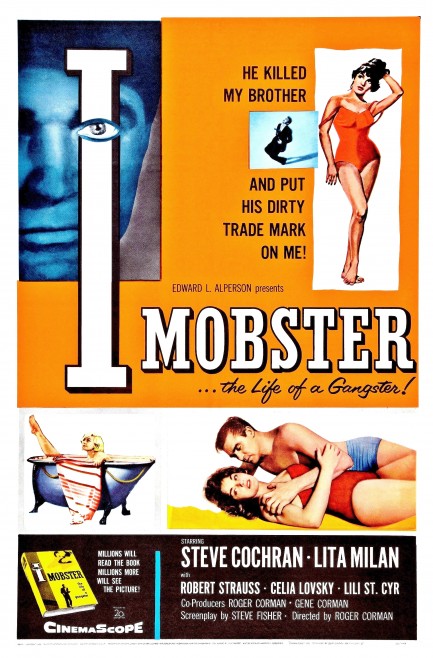
Above you see a U.S. promo poster for the crime drama I, Mobster, starring Steve Cochran in a rags-to-riches, innocence-to-corruption tale of a neighborhood kid who becomes a top man in the mob. The film was based on a 1951 novel of the same name published anonymously, but later identified as coming from the typewriter of Joseph Hilton Smyth, who also wrote Angels in the Gutter. The early plot driver is the mob's attempt to extort cash payments out of a powerful trade union. The plan is to offer services as “outside labor relations experts.” Cochran, as an ambitious footsoldier, expands the mob's vision, its areas of interest, and its profits. Pretty soon he's riding high, high, high. But it can't last. Of course not.
The film has the usual elements from this sub-genre: the round-the-way girl who offers redemption, the wailing mom who implores her son to go straight, the unimpressed father who eventually disowns him, the mob boss who's worried about his brash number two, and the ticking bomb—i.e. the seeds of destruction planted earlier. Here it's a little boy who knows Cochran killed a man. He grows up and becomes enfolded in the mob too, which places him in perfect position to blackmail Cochran. But Cochran is a tough cookie. It may take more than an ambitious twenty-something to bring him down, and it may be that the true seeds of destruction were planted earlier and elsewhere.
While the plot elements may be typical, the cast isn't. Cochran is a good, intense, underrated screen presence. Robert Strauss is perfect as Cochran's right hand man and steadying influence. The radiant Lili St. Cyr spices up the proceedings midway through with a burlesque routine. And the stunning Lita Milan is excellent as the good girl-turned-mob moll. In addition, the film is solidly directed. You often see I, Mobster, described as an early Roger Corman movie. Does a director's twentieth movie count as early? Corman knows what he's doing here. His road forked into the dark woods of schlock, but helming this production, with a low budget, he managed to squeeze out a solid b-mobster flick. There's nothing fresh in it, but with this cast freshness isn't needed. I, Mobster premiered today in 1959.
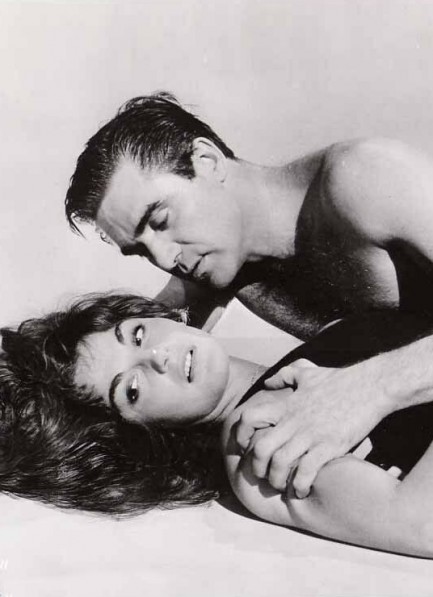 Don't play coy, baby. Would you rather be with a gangsta like me or some accountant from fuckin' donkeyville?
Don't play coy, baby. Would you rather be with a gangsta like me or some accountant from fuckin' donkeyville? That's what I thought.
That's what I thought.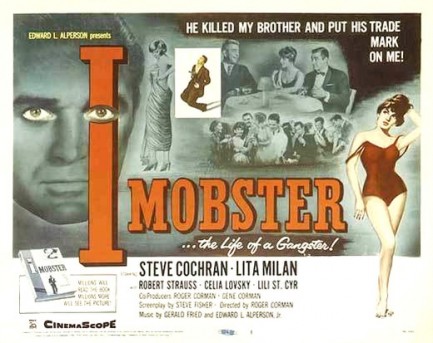
| Modern Pulp | Jan 15 2022 |

Gladiatorial combat is all fun and games until the gladiators decide you're the one who needs killing.

We've featured master fantasy artist Frank Frazetta a few times, so it seems only fair that we feature the yang to his yin, Peruvian born legend Boris Vallejo. Here you see his art on a promo poster for Naked Warriors, which is better known as The Arena, released this month in 1974 starring another legend, Pam Grier, along with occasional co-star, the lovely Margaret Markov. We've talked about the movie twice, shared its Italian and U.S. promo art, and shared rare promo images of Grier once or twice, or maybe even three or four times, as well as a beautiful centerfold of Markov. All of that imagery is worth a look.
Vallejo's art is a nice fit for a tale of enslaved gladiators pitted against each other eventually defying their sadistic masters to fight for freedom. He painted when Corcorde Pictures acquired the rights to the film from MGM/UA for a VHS release in 1988. Concorde/New World was formed and run by schlockmeister Roger Corman, and that explains the black wedges at the top and bottom of the promo. When you do things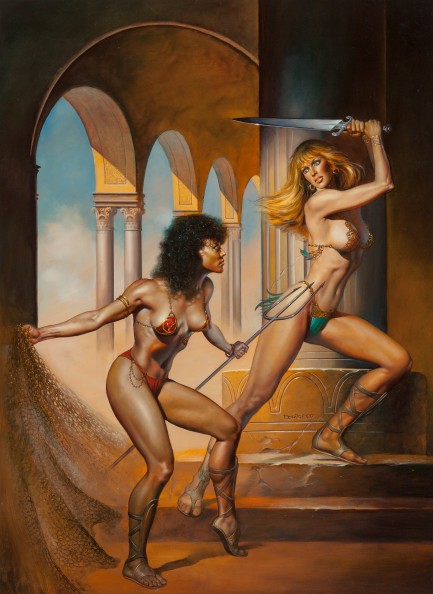 on the cheap as a matter of course like Corman did, tilting the art in an inelegant way to make the two figures fit a door panel format seems logical. We can imagine him: “Just lean the fucker left. Who cares about the blank spots?” And indeed, who does, really?
on the cheap as a matter of course like Corman did, tilting the art in an inelegant way to make the two figures fit a door panel format seems logical. We can imagine him: “Just lean the fucker left. Who cares about the blank spots?” And indeed, who does, really?
 on the cheap as a matter of course like Corman did, tilting the art in an inelegant way to make the two figures fit a door panel format seems logical. We can imagine him: “Just lean the fucker left. Who cares about the blank spots?” And indeed, who does, really?
on the cheap as a matter of course like Corman did, tilting the art in an inelegant way to make the two figures fit a door panel format seems logical. We can imagine him: “Just lean the fucker left. Who cares about the blank spots?” And indeed, who does, really?In addition to a great piece of art, as a bonus we've also uploaded some Arena production photos we found scattered around the internet over the years. Most of them were shot by Italian lensman Angelo Frontoni, whose work we've admired often. As it is a lusty sort of movie, some of the shots are a bit lusty too. We had these sitting about and didn't have a real good excuse to share them until today, so from the good old days of ’70s sexploitation behold: Grier, Markov, Lucretia Love, Maria Pia Conte, Rosalba Neri, and others in barely-there gladiatorial gear—and sometimes less. We can't say the film is perfect, but it's definitely worth a watch.
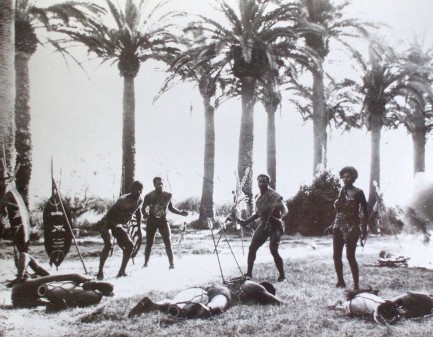
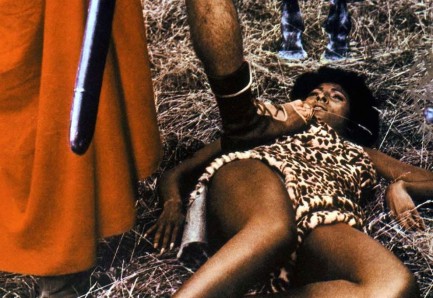
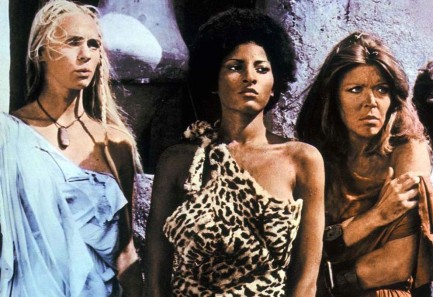
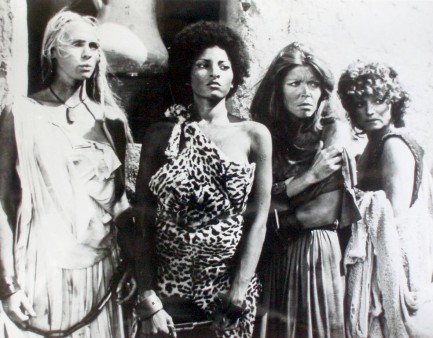
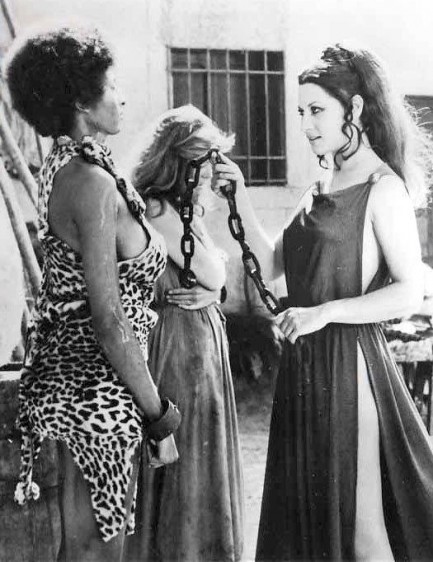
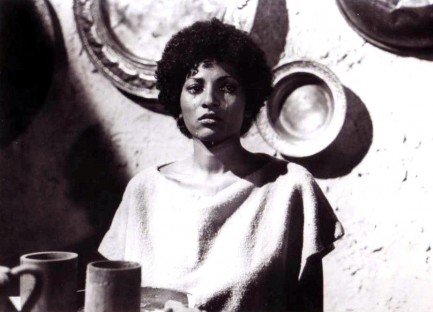
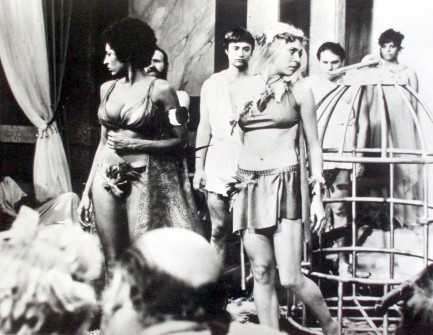
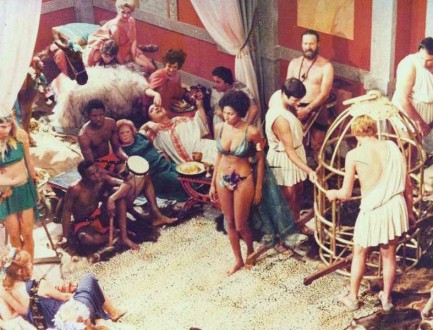
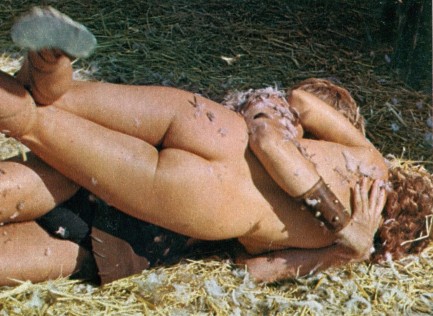
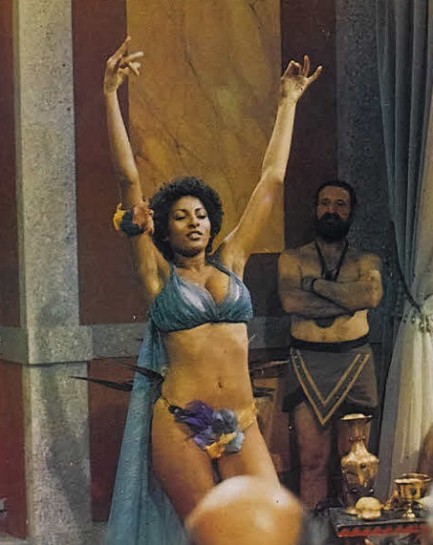
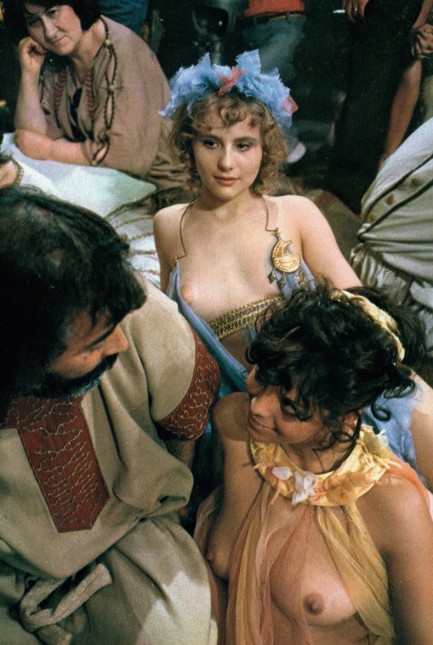
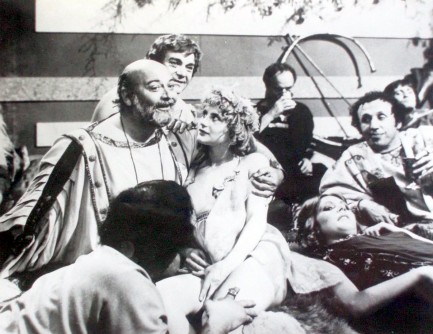
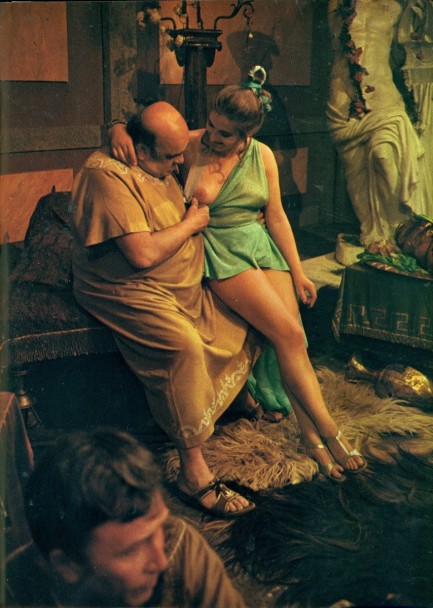
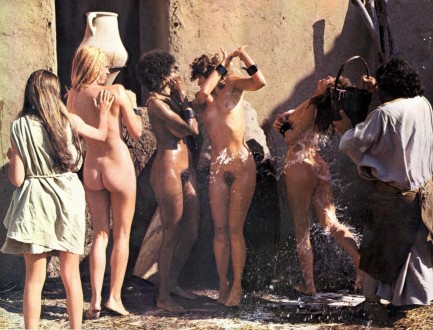
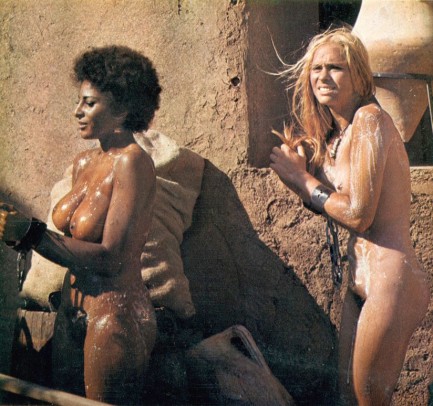
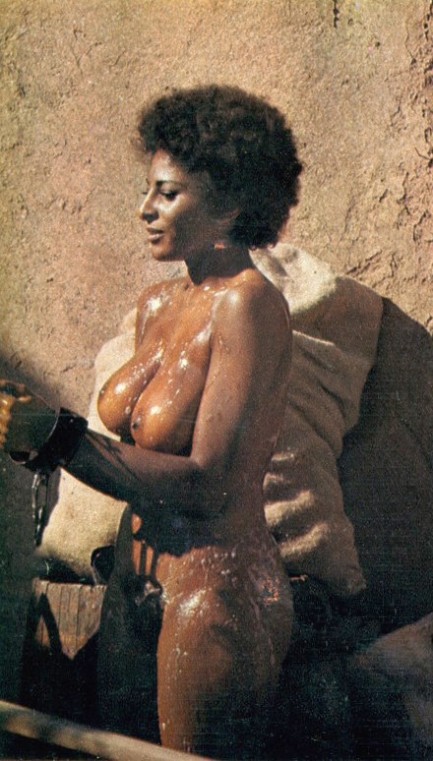
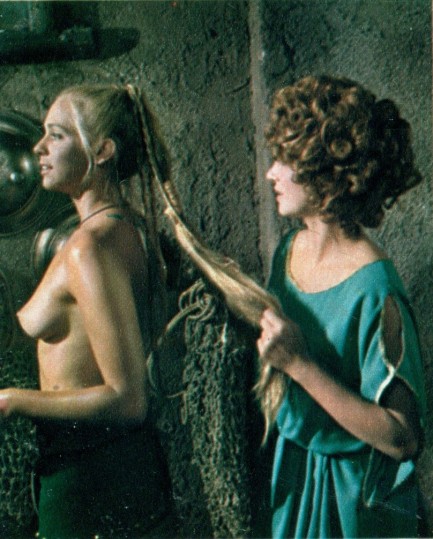
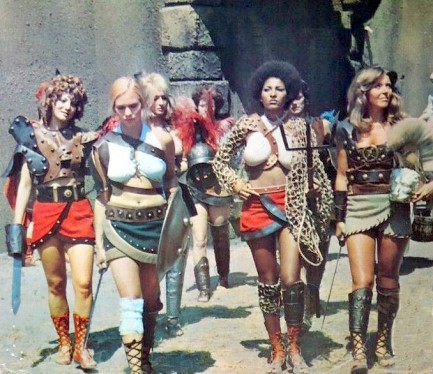

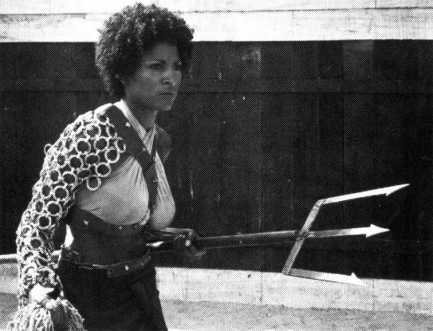
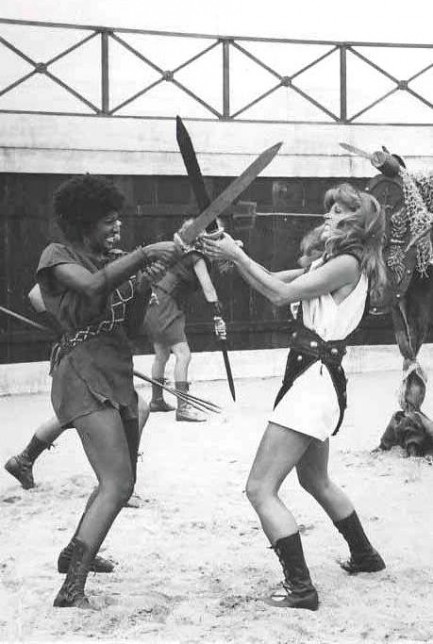
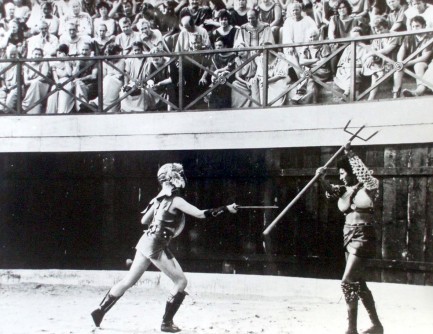
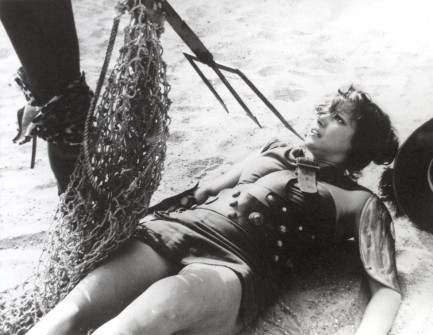
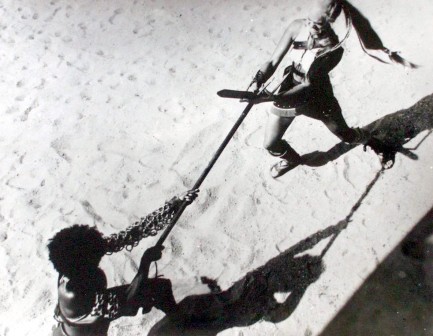
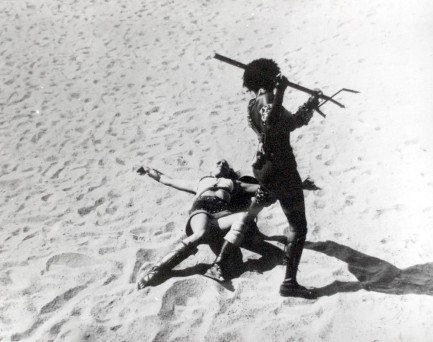
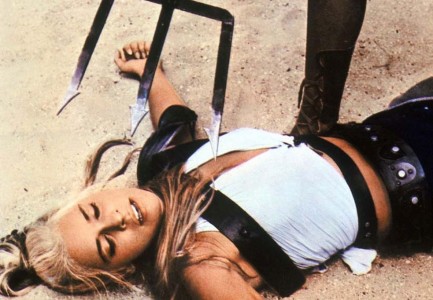
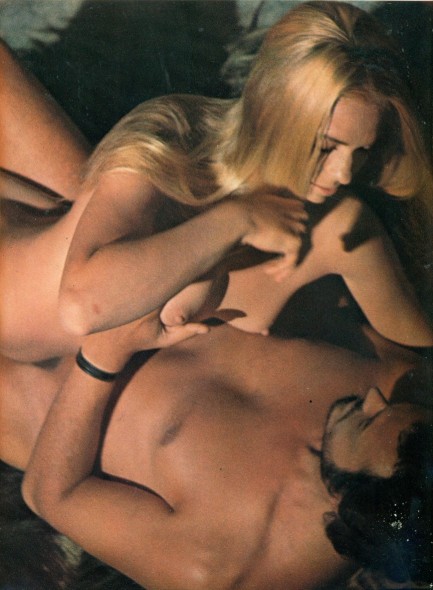
| Vintage Pulp | Jun 11 2021 |

They're meaner than the gators and deadlier than the snakes.
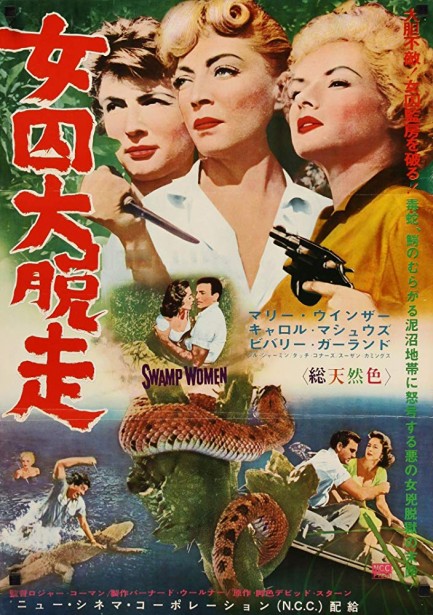
Above, a Japanese poster for Swamp Women, originally made in 1956, starring Mike Connors, Marie Windsor, Carole Matthews, and Beverly Garland. The Japanese title of this is 女囚大脱走, which means “female prisoner escape.” We consider that a bit of a plot spoiler, but the art is brilliant, and we suspect it enticed many a Japanese filmgoer. To their shock and horror, after they'd ponied up the yen they found out it was a Roger Corman b-movie and probably wanted to escape too.
| Vintage Pulp | Mar 2 2019 |

This one is paved with bad intentions every inch of the way.
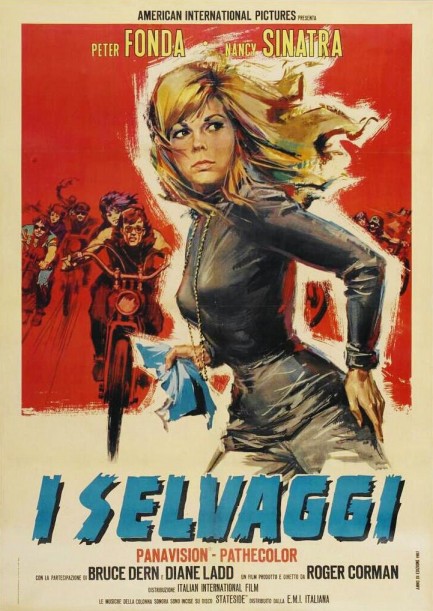
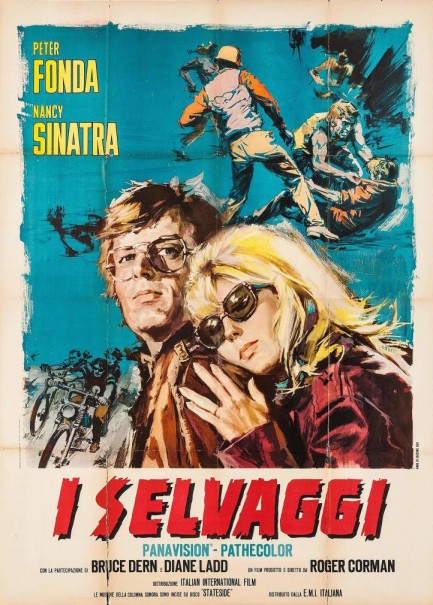
When we saw these two Italian posters for 1966's I selvaggi our eyes deceived us and we thought—for a wonderful split second—that they were for a film starring Frank Sinatra and Jane Fonda. But then we realized it was Nancy Sinatra and Peter Fonda, who are pretty big downgrades, quality-wise. No offense intended toward them. Fonda is an icon of cool, but not because he can act. We aren't aware of Nancy Sinatra wowing people with her thespian chops either. But we watched the movie anyway.
It's better known as The Wild Angels, and it's Roger Corman directed schlock from American International Pictures about a group called the Hell's Angels ripping and bombing around Southern California, causing problems to law abiding folk and the police. While it's obviously a take on the infamous motorcycle gang, in real life the gang spells its name without an apostrophe. Why that makes a difference in terms of trademark infringement we have no idea, but we assume that's why it was put there. Or maybe it's just a correction of an assumed typo in the real gang's name. Or maybe nobody even noticed the difference.
Whatever the case, the Hells Angels couldn't really have claimed that the racist and violent Hell's Angels portrayed by Fonda, Sinatra, Bruce Dern, and company differed greatly from reality. The real Angels may not have clobbered preachers and taken over churches for all night bacchanals, but they did some terrible shit. Despite the incendiary verisimilitude of the movie, it's mostly a bore—but one that helped establish the outlaw biker genre and pave the way for 1969's Easy Rider. For that it deserves a little credit. Now we're going to try and find out if Jane Fonda and Frank Sinatra ever acted together, because that's a movie we'd like to see.
Whatever the case, the Hells Angels couldn't really have claimed that the racist and violent Hell's Angels portrayed by Fonda, Sinatra, Bruce Dern, and company differed greatly from reality. The real Angels may not have clobbered preachers and taken over churches for all night bacchanals, but they did some terrible shit. Despite the incendiary verisimilitude of the movie, it's mostly a bore—but one that helped establish the outlaw biker genre and pave the way for 1969's Easy Rider. For that it deserves a little credit. Now we're going to try and find out if Jane Fonda and Frank Sinatra ever acted together, because that's a movie we'd like to see.
